Yellowstone is world renowned for its geysers and abundant wildlife. Enormous in size, there’s a ton to take in at America’s first national park. To help you plan your visit, we’ve rounded up the best hikes in Yellowstone National Park!
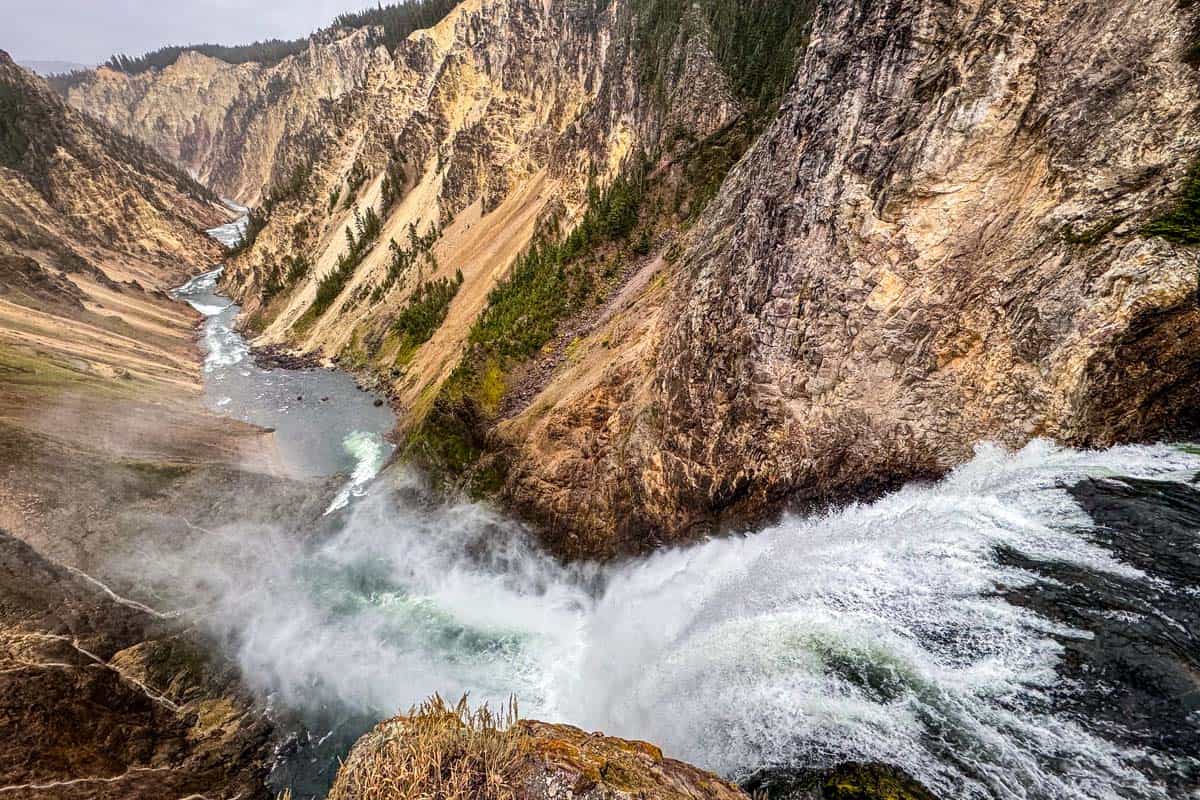
As the nation’s very first national park, Yellowstone has long attracted visitors from near and far. One of the most geothermally active areas in the entire world, the park’s unique ecosystem of geysers, hot springs, and volcanic formations are certainly mesmerizing.
Beyond just its scenery, there are so many fun things to do in Yellowstone, you can easily spend weeks exploring this beauty. And one of the best ways to explore and get off the beaten path is by hiking!
From stunning summits and meandering riverside trails to tranquil lakes and boardwalks that get you up-close and personal to the park’s geysers and springs, some of the best hikes in Yellowstone National Park lie well away from its star attractions.
For a park of such worldwide fame, it’s relatively easy to leave the crowds behind and unplug among stunning surroundings.
We’ve put together a list of the best hikes in Yellowstone National Park, from quick and easy loops to longer day hikes and the best backcountry routes, so you can plan out your hiking ahead of time and spend more time hitting the trails.
Yellowstone Hiking Guide
For more information on planning your hiking trip to Yellowstone, jump to the sections below, or just keep reading!
- Best time to visit Yellowstone
- National Park Annual Pass
- What to pack for hiking in Yellowstone
- Roundup of best hikes in Yellowstone National Park

Best hikes in Yellowstone National Park
While Yellowstone isn’t a national park known for its trails (we’d recommend Grand Teton for that!), there are still plenty of hiking opportunities. We’ve narrowed down our top picks for the best hikes in Yellowstone National Park to add to your itinerary.
1. Point Sublime via Artist Point
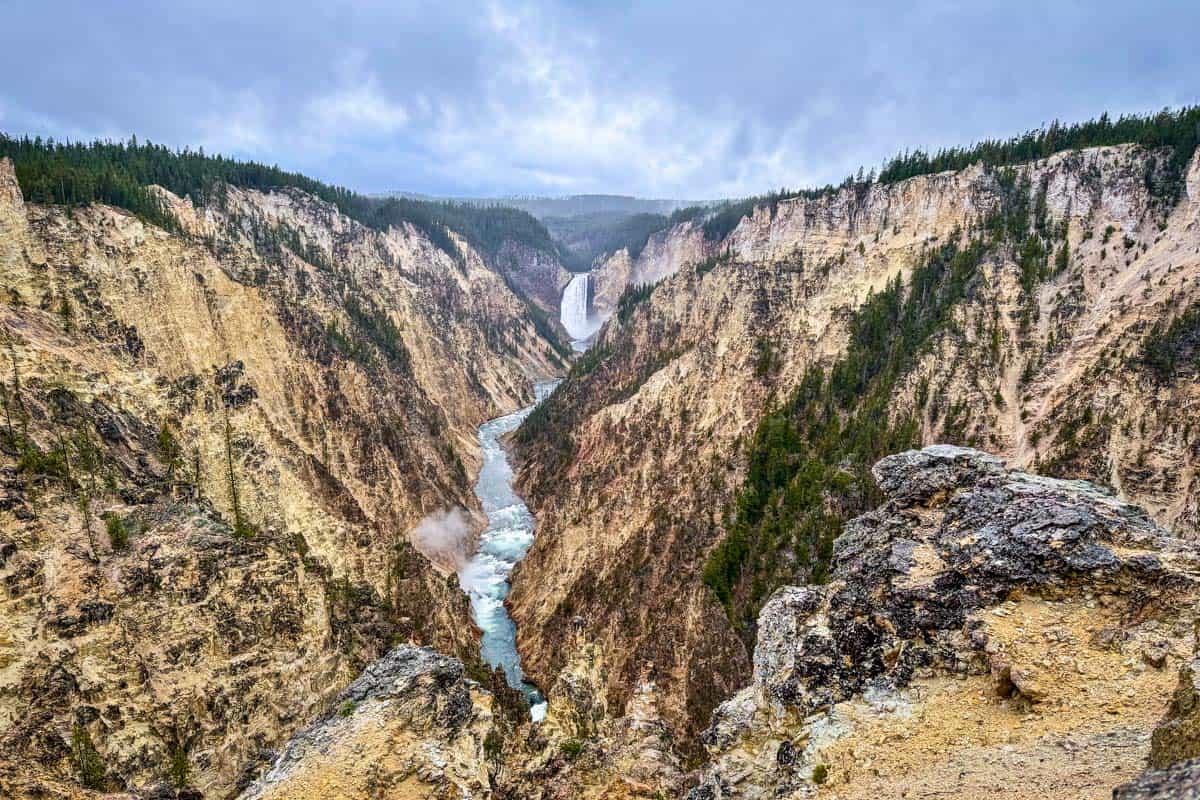
- Distance: 2.7 miles out-and-back
- Elevation: 341 feet
- Difficulty Rating: Moderate
- View the trail notes
A visit to Yellowstone isn’t complete without a stop at the Grand Canyon of the Yellowstone. The gorge drops more than 1,000 feet!
The trail starts from Artist Point and follows the rim with continuous views. With only the sounds of Yellowstone River thundering deep in the valley below, this trail is one of the best hikes in Yellowstone National Park.
2. Brink of the Lower Falls Trail
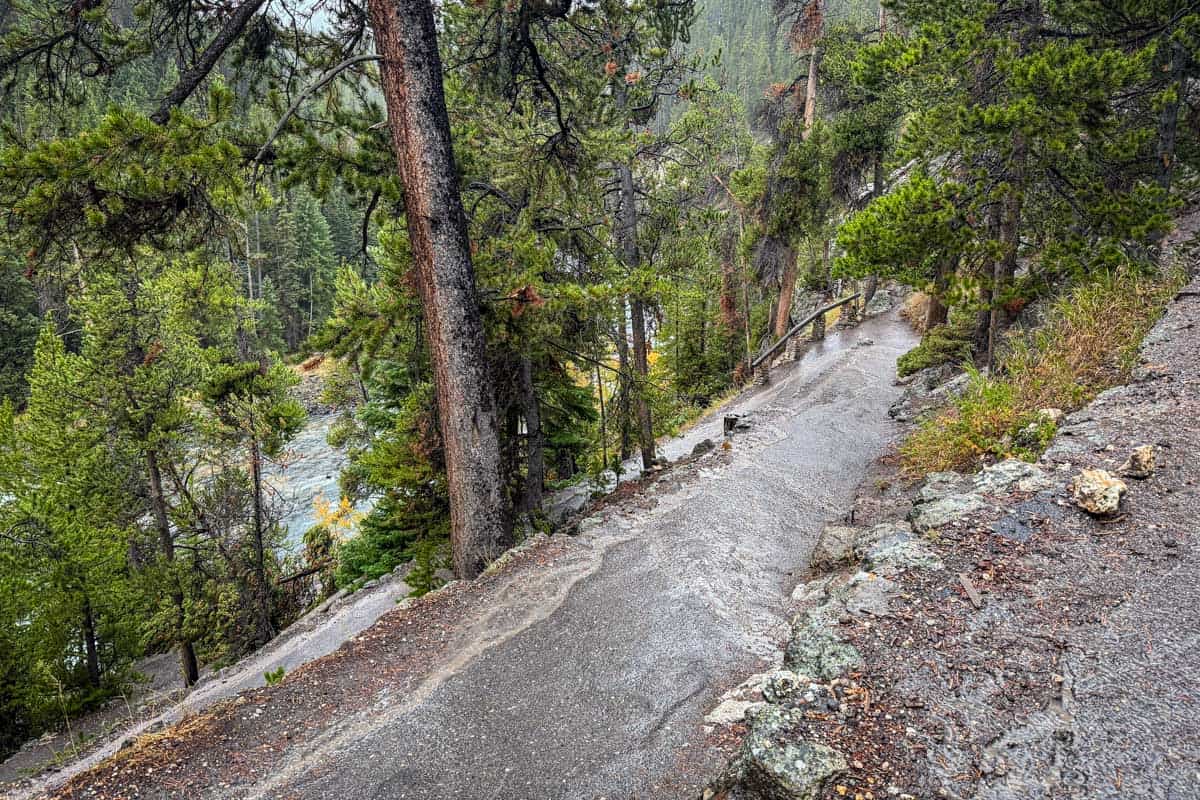
- Distance: 0.7 miles out-and-back
- Elevation: 265 feet
- Difficulty Rating: Easy
- View the trail notes
Short but so fun, this hike leads to an overlook just above Lower Falls in Yellowstone Canyon. Seeing the incomprehensible volume of water cascading below is unforgettable! (Just check out our cover photo for this article!)
Being right on the edge also provides a great perspective into the multi-colored canyon, making this one of our favorite Yellowstone National Park hikes.
Although this is a short trail, make sure to wear adequate footwear. We’ve seen a few people brave the switchbacks in flip-flops or basic tennis shoes, and we would not recommend it — the trail can get slippery near the overlook!
3. Grand Prismatic Spring Overlook Trail
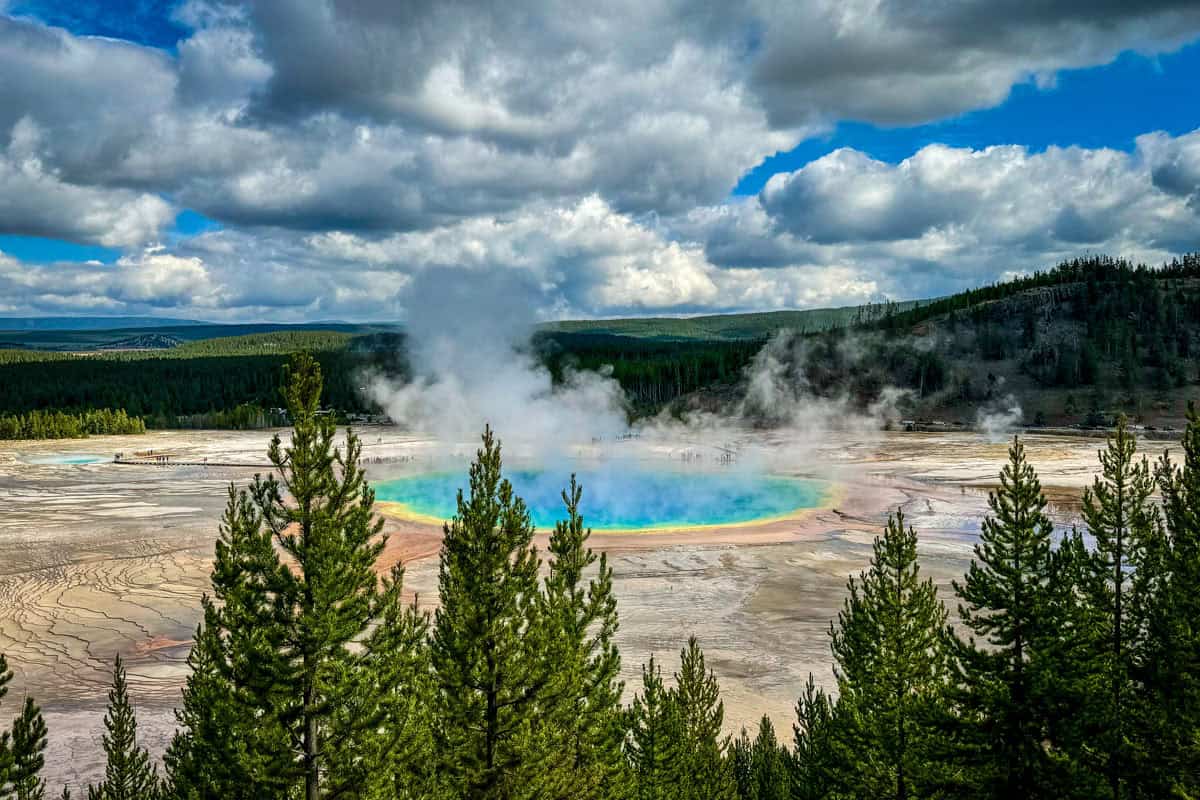
- Distance: 1.5 miles out-and-back
- Elevation: 200 feet
- Difficulty Rating: Easy
- View the trail notes
This aptly-named trail leads to the popular overlook of rainbow-colored Grand Prismatic Spring, the largest in the U.S. The short and sweet trail is a MUST if you are able to do any hiking in Yellowstone National Park.
At the top of the overlook, you’ll find a platform with railings that is usually pretty crowded if you go during peak hours (really any time of day on a sunny day), but the views are 100% worth battling the crowds.
4. Fairy Falls Trail

- Distance: 4.8 miles out-and-back
- Elevation: 170 feet
- Difficulty Rating: Easy
- View the trail notes
While most people take the Fairy Falls trail to reach the Grand Prismatic Spring Overlook and turn around after the observation deck, we recommend you continue on.
The hike continues through easy-going grasslands to Fairy Falls, a magical cascade snaking down a cliff. Half a mile further, it concludes at the Spray and Imperial Geysers. Such a diversity of sights in a short distance makes this one of the best hikes in Yellowstone National Park, especially for families.
5. Bunsen Peak
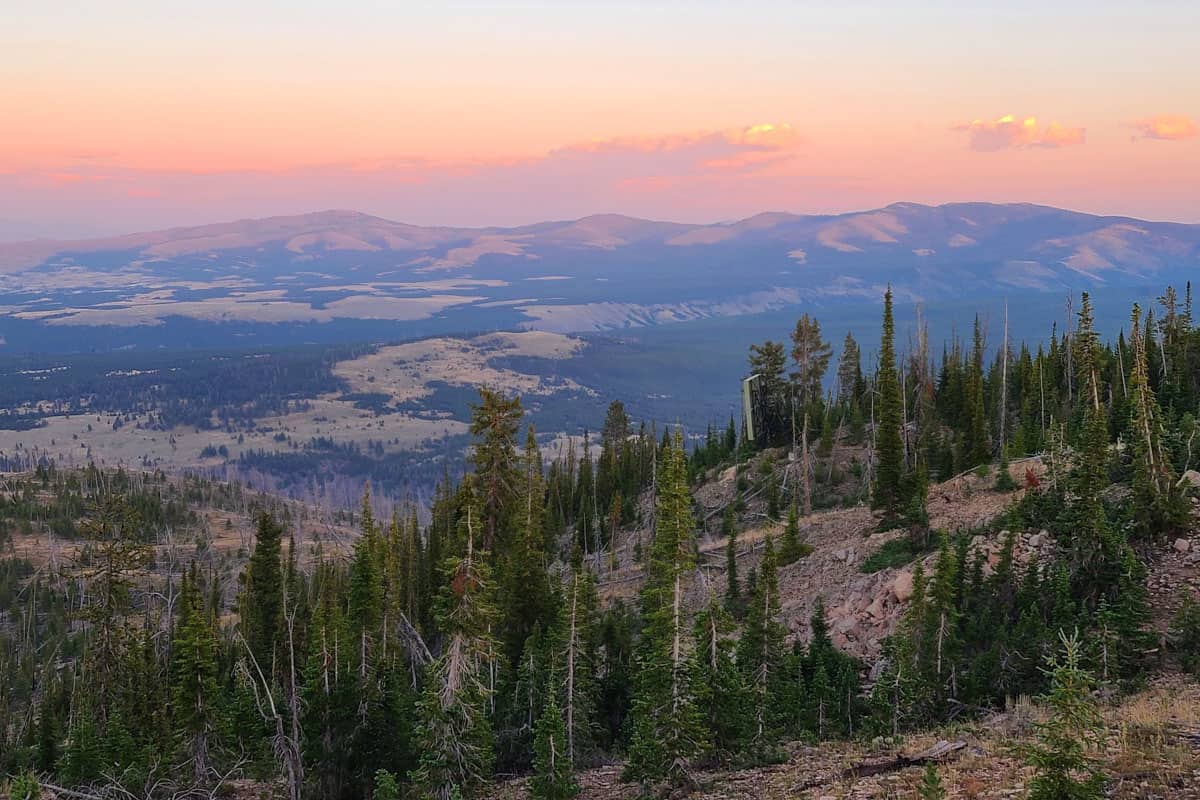
- Distance: 4.4 miles out-and-back
- Elevation: 1,282 feet
- Difficulty Rating: Moderate
- View the trail notes
Itching to tackle a summit but don’t have all day? Bunsen Peak is one of the best hikes in Yellowstone, delivering fabulous views in a relatively short distance. It’s especially great at sunrise or sunset!
The mountain, an extinct volcanic cone, features cool rock formations and tons of wildflowers. The ascent is just challenging enough to get your heart pumping, but not intense like Avalanche Peak.
6. Old Faithful Geyser Loop Trail
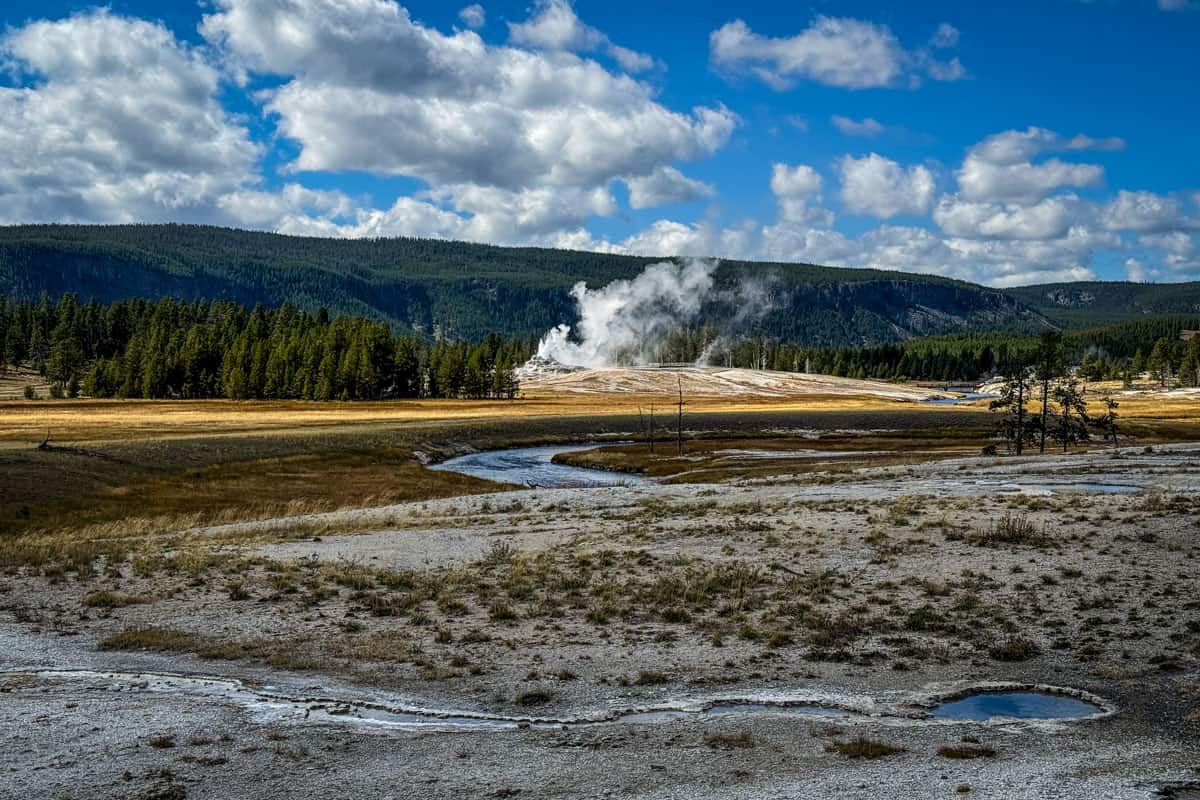
- Distance: 0.7 miles out-and-back
- Elevation: 19 feet
- Difficulty Rating: Easy
- View the trail notes
We’d be remiss not to recommend a stroll around Old Faithful, one of the most iconic aspects of Yellowstone. Erupting geysers, unusual bubbling springs, and bison!
Sure, it gets crowded, but is it a visit to Yellowstone without this world-famous attraction? The entire trail is a boardwalk, so it’s accessible for all abilities, making it a top overall hike in Yellowstone.
It’s worth timing your excursion to see an eruption. Old Faithful erupts frequently and on a very regular schedule, so stop into the visitor center for that day’s predicted schedule of when the 180-foot stream shoots into the air!
7. Upper Geyser Basin and Old Faithful Observation Point Loop
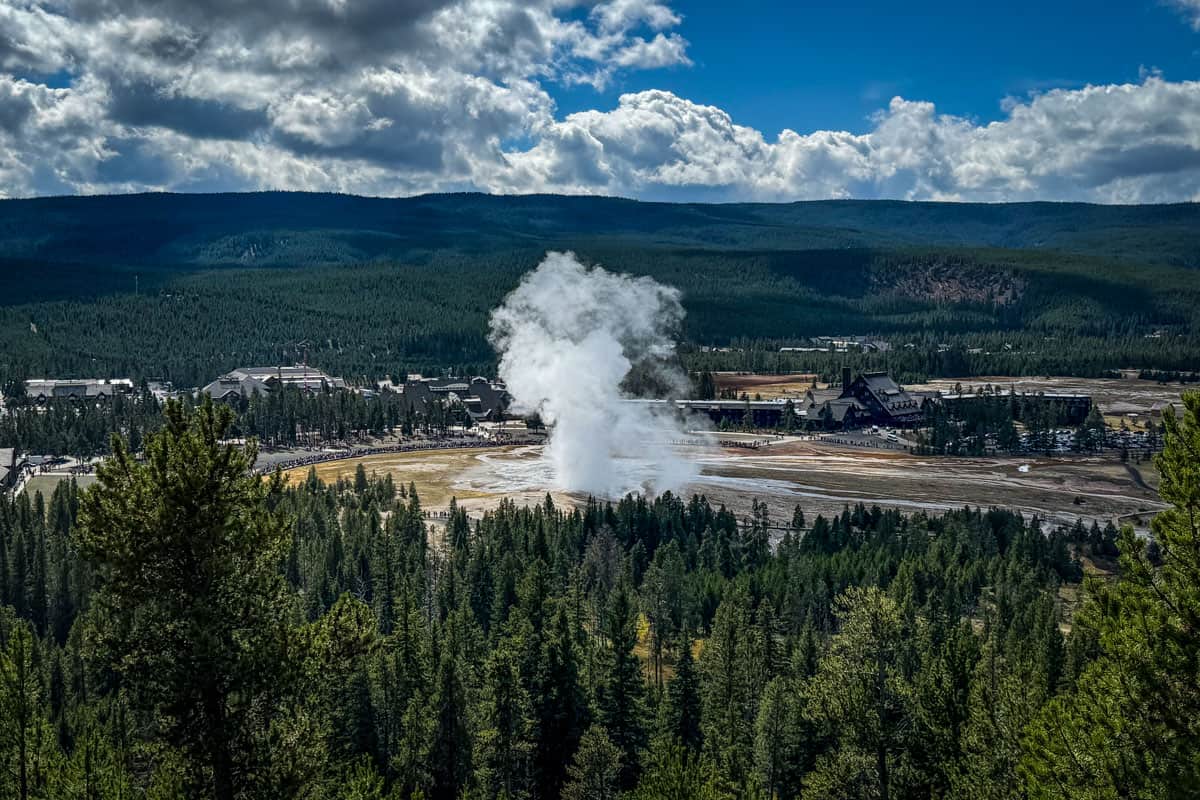
- Distance: 4.9 mile-loop
- Elevation: 357 feet
- Difficulty Rating: Moderate
- View the trail notes
While we recommend seeing Old Faithful erupt from the ground (it’s cooler to see the eruption up close), we highly recommend making the trek up to Observation Point, just to take in the views.
The trail loops around the Upper Geyser Basin (which is a can’t-miss and definitely worth going beyond just Old Faithful) on a boardwalk and then climbs upward to the Observation Point.
The trail to the point is short and sweet, but rated moderate for a fairly steep elevation gain. Though when I was there, I saw young children around the ages of 5-10 doing the hike without much assistance, so it’s definitely not too challenging.
8. Mystic Falls, Fairy Creek, and Little Firehole Loop

- Distance: 3.5-mile loop
- Elevation: 606 feet
- Difficulty Rating: Moderate
- View the trail notes
Not far from Old Faithful, one of the best Yellowstone hikes leaves the crowds for more geothermal curiosities and pretty waterfalls. Stunning Sapphire Pool, a deep-blue hot spring, is an early attraction on the trail.
The trail then climbs up a hill for an aerial view of geysers steaming into the air, and a final treat is beautiful Mystic Falls, two parallel, thundering cascades. The variety of natural beauty over such a short distance makes this some of the best hiking in Yellowstone!
9. Mammoth Terraces
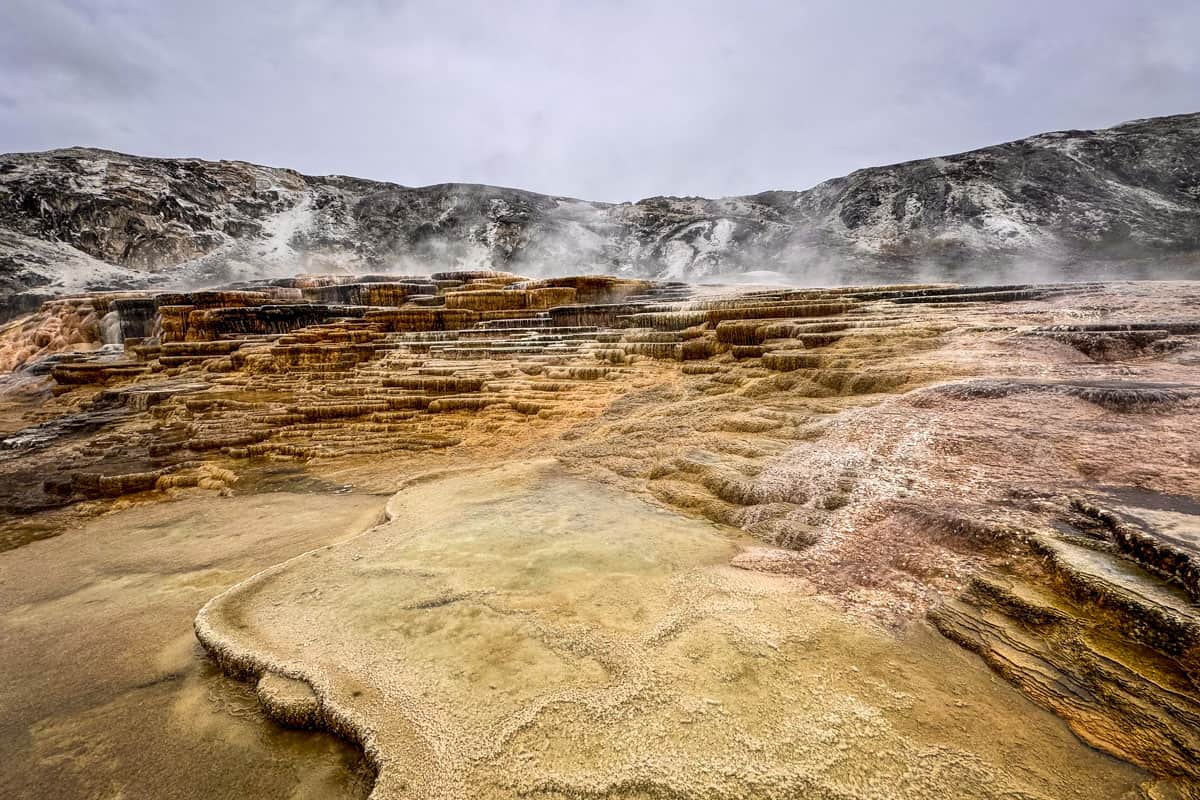
- Distance: 2.2-mile loop
- Elevation: 324 feet
- Difficulty Rating: Easy
- View the trail notes
Filled with unusual geothermal springs, vents, and rock formations, this boardwalk trail is a great overview of Yellowstone’s unique environment. Suitable for all ages and abilities, there’s even an alternate route with ramps for strollers and wheelchairs.
Psst! Want to combine your trip to Yellowstone with another incredible U.S. National Park? Check out our 5 Day Glacier National Park to Yellowstone on our sister site to help you plan an epic road trip!
10. Lone Star Geyser Trail
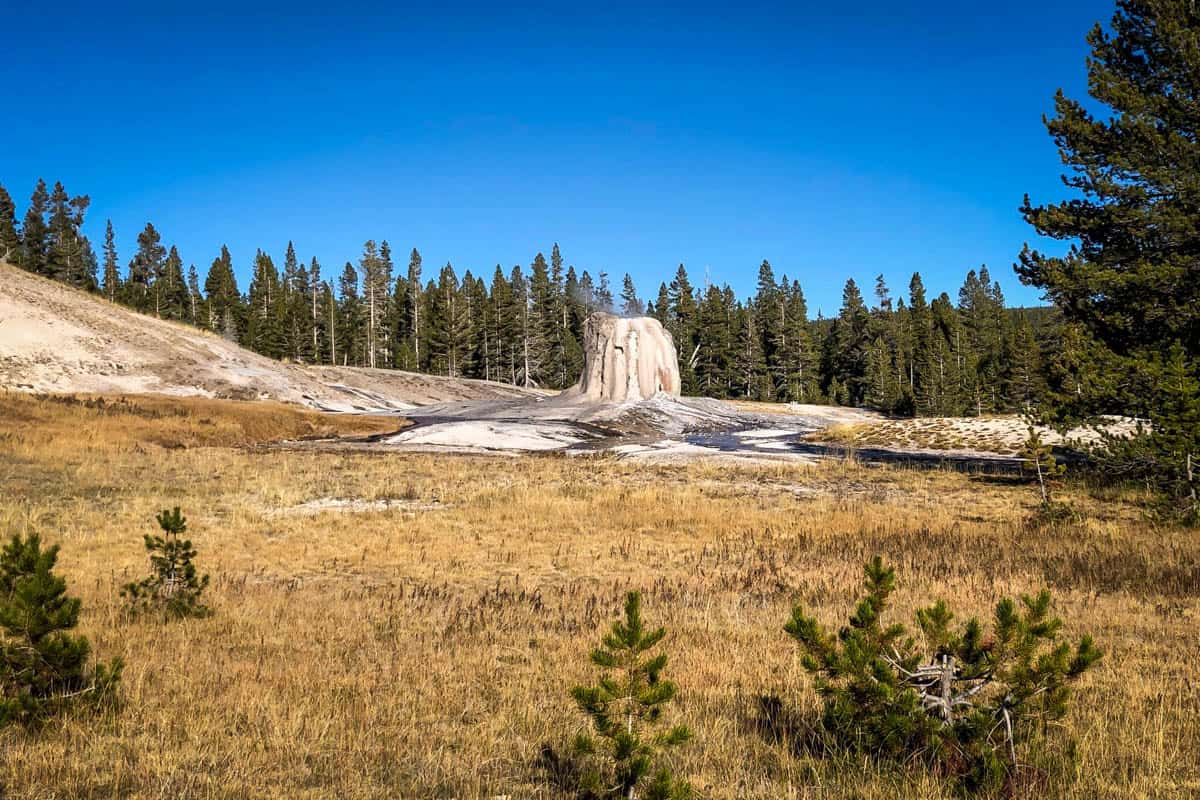
- Distance: 5.3 miles out-and-back
- Elevation: 127 feet
- Difficulty Rating: Easy
- View the trail notes
Eager to see a large geyser without the crowds? This easy-going hike leads to one of the most captivating geysers in the park.
Lone Star emits a nearly 50-foot stream into the sky from a large, uniquely shaped cone. The trail leading to the geyser is a mostly paved forest road following a babbling creek, making it one of the most accessible Yellowstone hikes for all hikers!
Psst! Want to combine your trip to Yellowstone with another of America’s greatest national parks, check out our 4 day Grand Teton to Yellowstone itinerary to help you plan an epic road trip!
11. Mount Washburn

- Distance: 6.8 miles out-and-back
- Elevation: 1,394 feet
- Difficulty Rating: Challenging
- View the trail notes
With jaw-dropping views to the Grand Tetons, 10,200-foot Mount Washburn is one of the most dramatic vistas in the park. This Yellowstone hike follows a former stagecoach route, so while the elevation gain is tiring, the path inclines at a consistent grade and isn’t technical.
We recommend doing this early, as late afternoon thunderstorms often develop around the peak.
12. Storm Point Loop
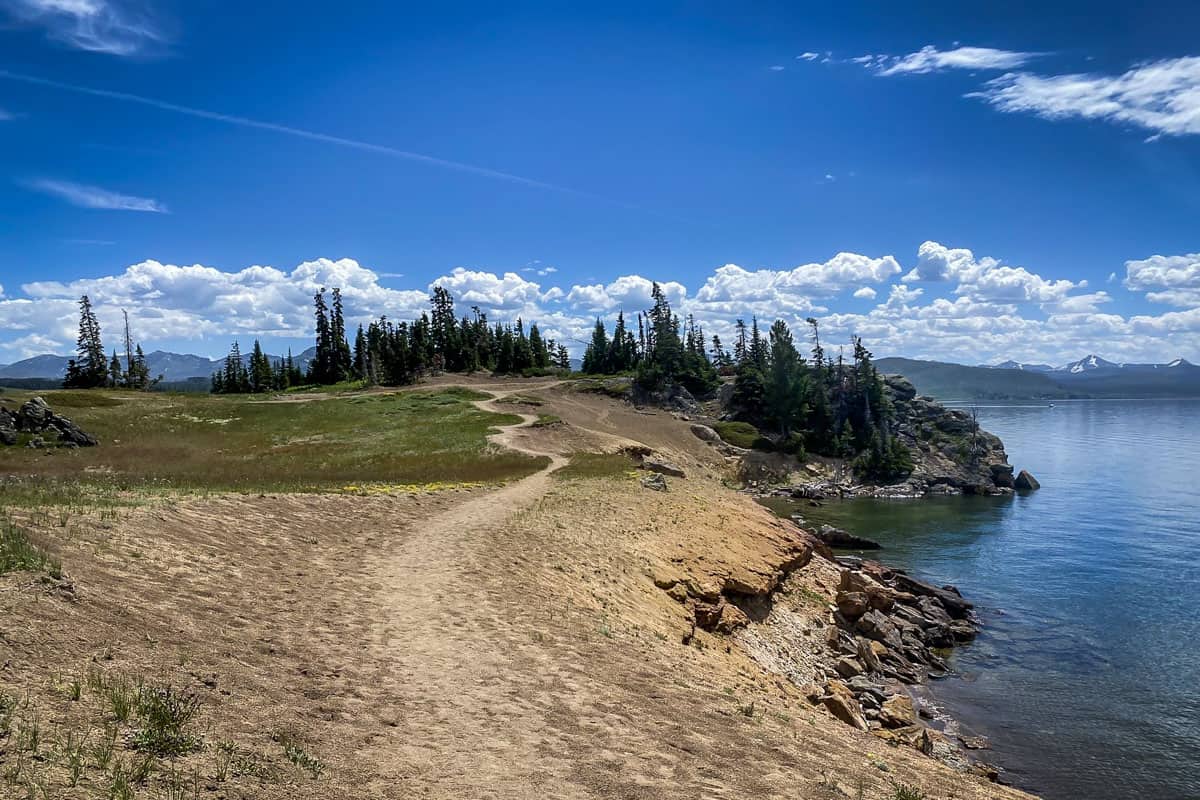
- Distance: 2.5-mile loop
- Elevation: 95 feet
- Difficulty Rating: Easy
- View the trail notes
To check out Yellowstone Lake, hike Storm Point Loop. This laid-back trail meanders through woods before leading to expansive views of the largest North American freshwater lake above 7,000 feet. Although the water is too cold for swimming, it’s a great place to view wildlife.
13. Avalanche Peak
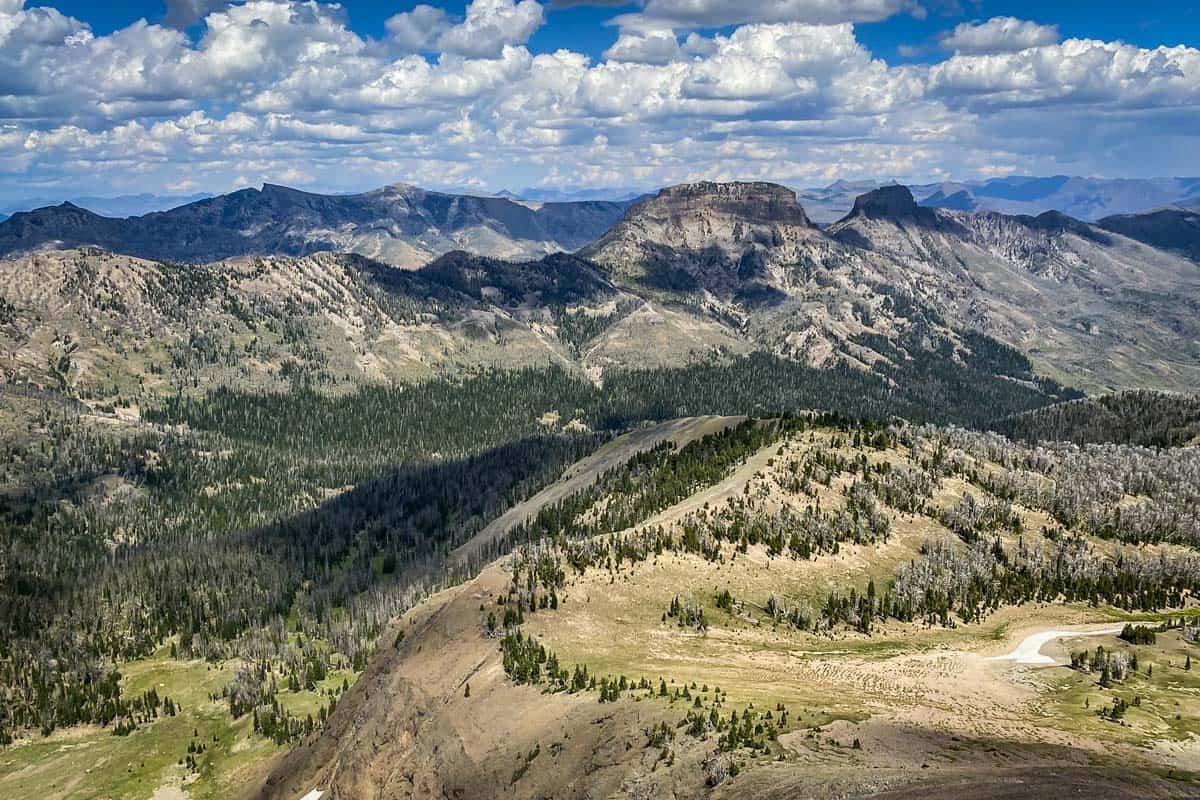
- Distance: 4.5 miles out-and-back
- Elevation: 2,070 feet
- Difficulty Rating: Challenging
- View the trail notes
A thigh-burning yet ultimately rewarding challenge, Avalanche Peak is one of the best Yellowstone hikes. With an average incline of 20%, we really can’t underestimate the steepness of this trail. It ascends 2,000 feet in the first two miles! However, all the effort is rewarded by sweeping mountains and aerial views of Yellowstone Lake.
14. Lamar Valley Trail
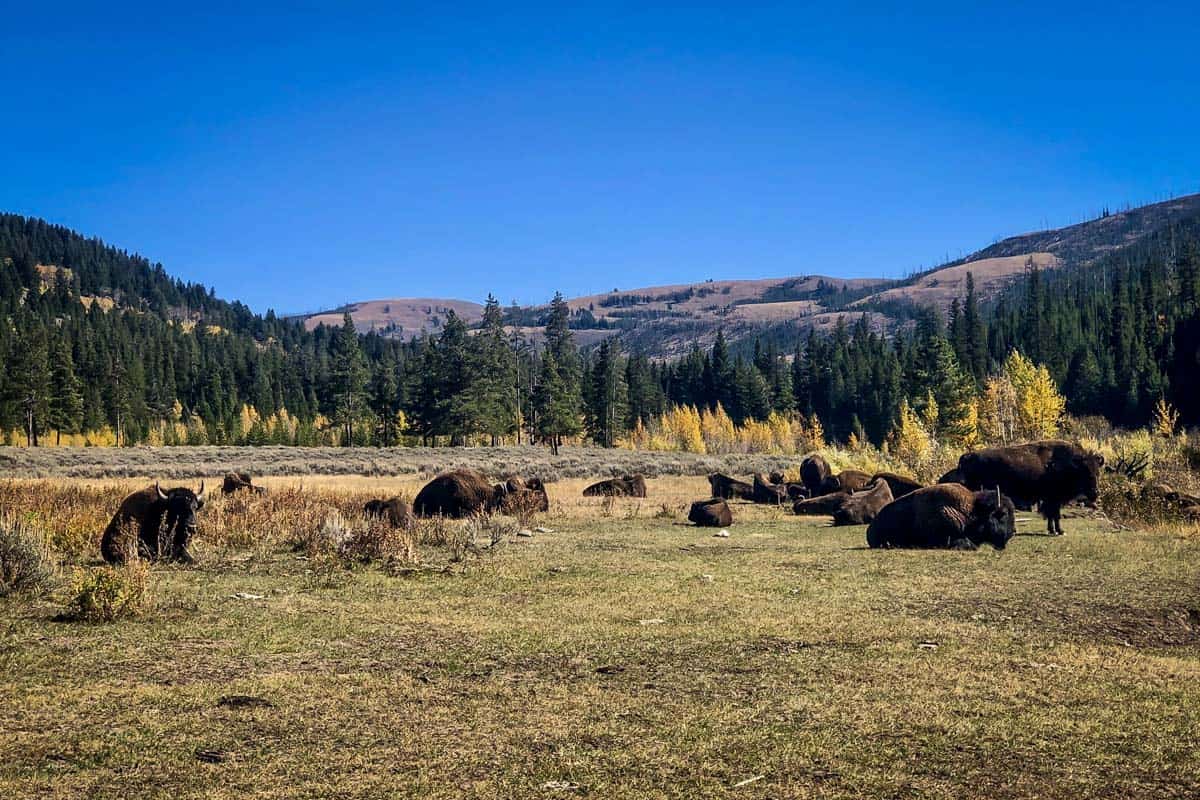
- Distance: 7.1 miles out-and-back
- Elevation: 698 feet
- Difficulty Rating: Moderate
- View the trail notes
The best hiking in Yellowstone for wildlife viewing is in Lamar Valley. In this verdant green, wildflower-filled valley, there are tons of bison, pronghorns, wolves, bears, and more.
Make sure to keep a safe distance from the animals — if they’re blocking a trail, simply wait until they pass.
15. Yellowstone River Trail
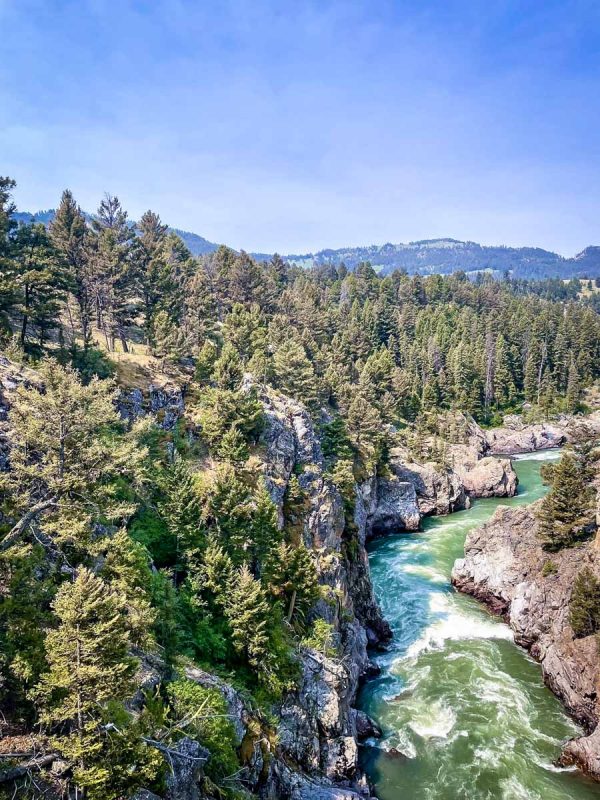
- Distance: 15.5 miles point-to-point
- Elevation: 1,765 feet
- Difficulty Rating: Challenging
- View the trail notes
Excellent for backpacking, this lower-elevation trail follows the Yellowstone River through picturesque surroundings. Although doable in one long day, we highly recommend two or three (and we’ve heard of people taking up to five!).
Watch for the abundant wildlife, listen to the movement of water, and set up camp among breathtaking scenery. Don’t forget to register for backcountry permits at one of the park’s visitor centers before setting out! They’re required, but fortunately, there’s no need to worry about them selling out.
16. Mud Volcano Trail

- Distance: 0.8-mile loop
- Elevation: 118 feet
- Difficulty Rating: Easy
- View the trail notes
For a changeup from other geothermal features, Mud Volcano is one of the best hikes in Yellowstone. Filled with bubbling, steaming, and very smelly springs, it’s one of the park’s most active areas.
A short but slightly steep trail leads around these sights, with fewer crowds than in other spots. There are also bison herds frequently grazing through rolling meadows, adding an additional dash of sightseeing.
17. Shoshone Lake via Delacy Creek
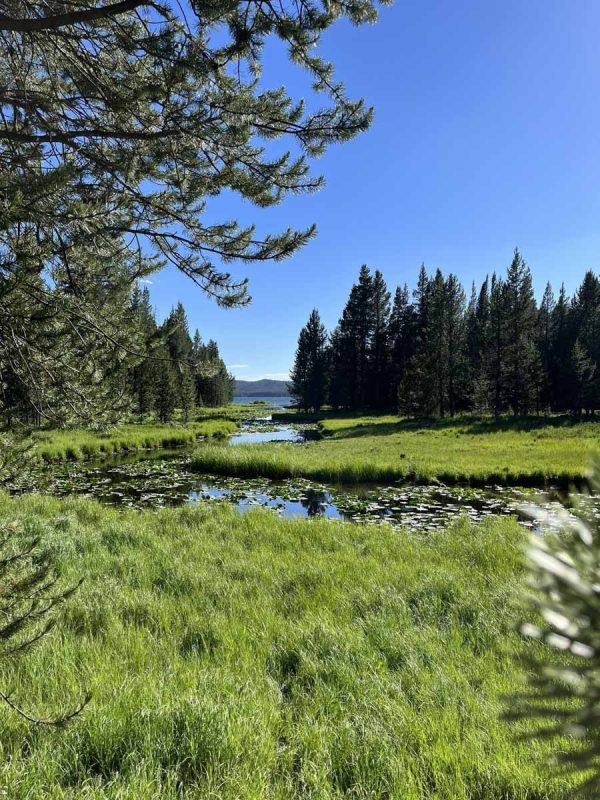
- Distance: 6.3 miles out-and-back
- Elevation: 291 feet
- Difficulty Rating: Moderate
- View the trail notes
For peace and quiet, hike to Yellowstone’s second largest lake. With mirror-still water surrounded by pines and mountains, it’s the ideal backdrop for relaxing with a picnic or book.
In fact, the best part of this hike might just be relaxing on the shore, so allot more time than you think you need. The trail is mostly flat, following a trickling stream through pretty meadows. Make sure to bring bug spray!

Best time to go hiking in Yellowstone National Park

Located above 7,000 feet, Yellowstone is a high-elevation park blanketed in snow for much of the year. Even in the summer, temperatures can get chilly, with nighttime lows in the 40s in July and August. Snow lingers in most of the park through early June and on mountains through late July.
Such a cold climate influences park activity and accessibility, so we’d recommend a visit in summertime, unless you want to stick to seeing only the park’s geothermal attractions and the canyon.
To embark on the best hikes Yellowstone National Park, we recommend visiting from late May to late September.
Although it’s high season, park roads are all open during this time, trails should be mostly free of snow, and you won’t need to worry much about weather conditions. Plus, if you plan to camp, temperatures won’t drop too low in the evenings.
Yellowstone’s ecosystem is a relatively dry environment, so there’s typically little need to worry about heavy rain. However, when I visited the national park in late-September, I got two full days of
rain — ranging from light mist to consistent drizzle — so it does help to check the weather ahead of time and be prepared.
Psst! Did you know Yellowstone is one of the best national parks to visit in winter?
America the Beautiful Annual Park Pass

If you’re planning to visit more than one of the U.S. National Parks, we’d highly encourage you to look into getting an annual park pass. At $35 per vehicle, entering Yellowstone along with other national parks in the U.S. can be expensive.
For just $80 per year, you can purchase the America the Beautiful park pass. This pass grants you free access to all of the national parks. Plus it also covers your entrance to over 2,000 natural, historical, and recreational sites across the United States.
→ If you still need convincing, check out our article: America the Beautiful Annual Park Pass: Is it Worthwhile?
What to pack for hiking in Yellowstone
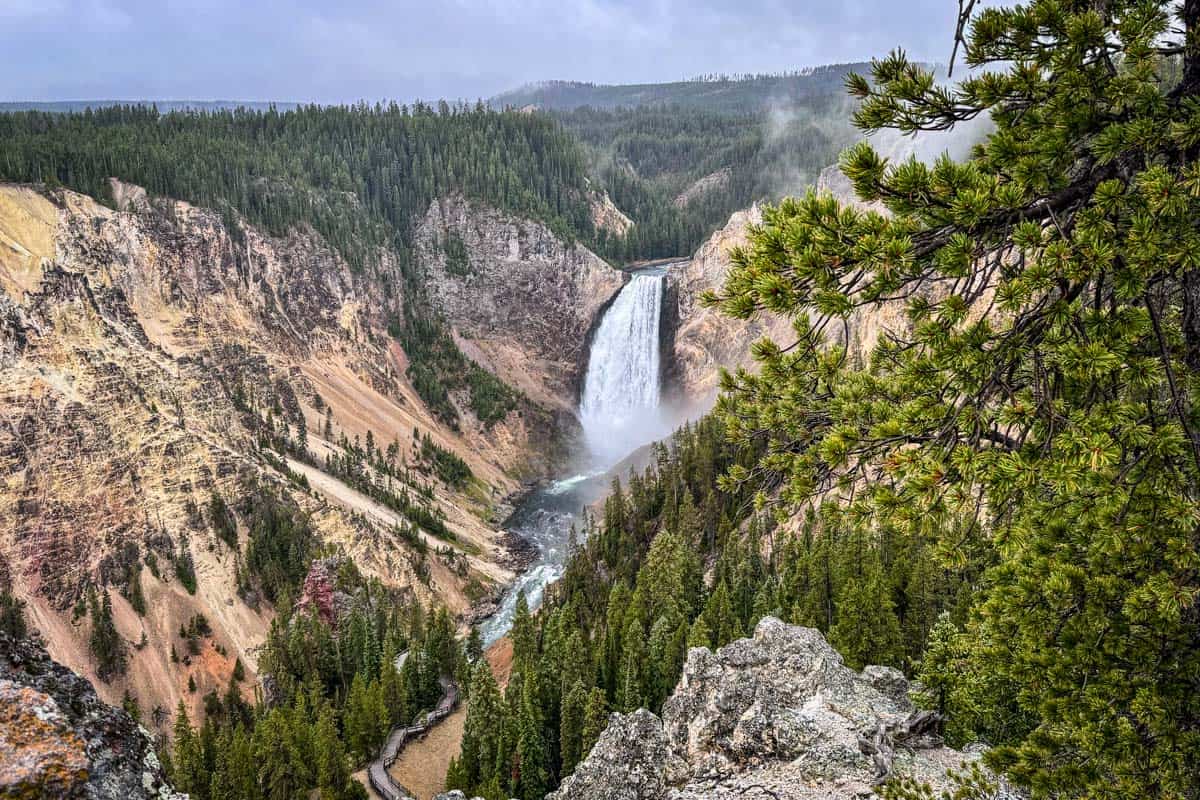
Although hikes in Yellowstone National Park vary in length and difficulty, there are some key items you’ll want to have in your pack no matter what your hiking plans.
- Navigation: we recommend using Alltrails+ to download the offline trail map (get your first week of using Alltrails+ for FREE when you sign up using our link!)
- Hiking backpack
- Hydration pack and/or water bottles
- Bug spray (we prefer the natural stuff)
- Sun protection: sunscreen, sunglasses, hat
- Camera and tripod (this is our favorite for hiking)
- Hiking boots/shoes or Chacos if you prefer sandals
- Comfortable hiking clothes (lots of layers!)
- Swimwear (if you’re visiting in the summer and plan to take a dip!)
- Hiking snacks
Be sure to grab our ultimate hiking packing list includes our must-have gear for any hiking trail!
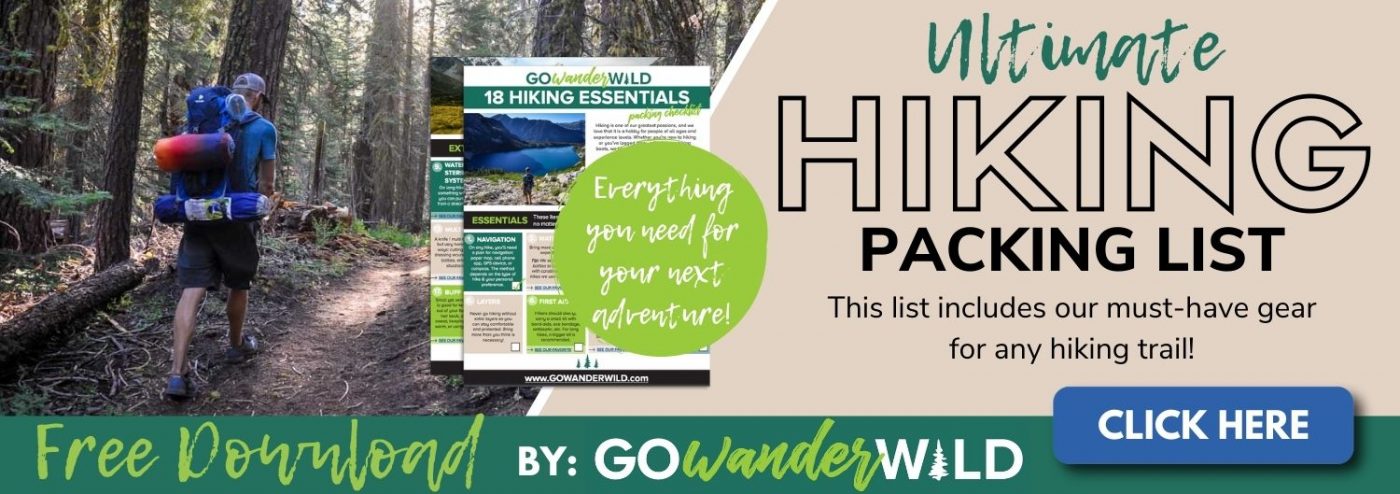
Roundup of the best hikes in Yellowstone National Park
Here’s a recap of all the best hikes in Yellowstone National Park so you can see everything in one place.
- Point Sublime via Artist Point
- Brink of the Lower Falls Trail
- Grand Prismatic Spring Overlook Trail
- Fairy Falls Trail
- Bunsen Peak
- Old Faithful Geyser Loop Trail
- Upper Geyser Basin and Old Faithful Observation Point Loop
- Mystic Falls, Fairy Creek, and Little Firehole Loop
- Mammoth Terraces
- Lone Star Geyser Trail
- Mount Washburn
- Storm Point Loop
- Avalanche Peak
- Lamar Valley Trail
- Yellowstone River Trail
- Mud Volcano Trail
- Shoshone Lake via Delacy Creek

You may also like…
- 3 Days in Yellowstone Itinerary
- 4 Day Grand Teton to Yellowstone Itinerary
- Grand Teton Hikes You Don’t Want to Miss
- 5 Day Glacier National Park to Yellowstone Itinerary
Save this article on Pinterest for later!
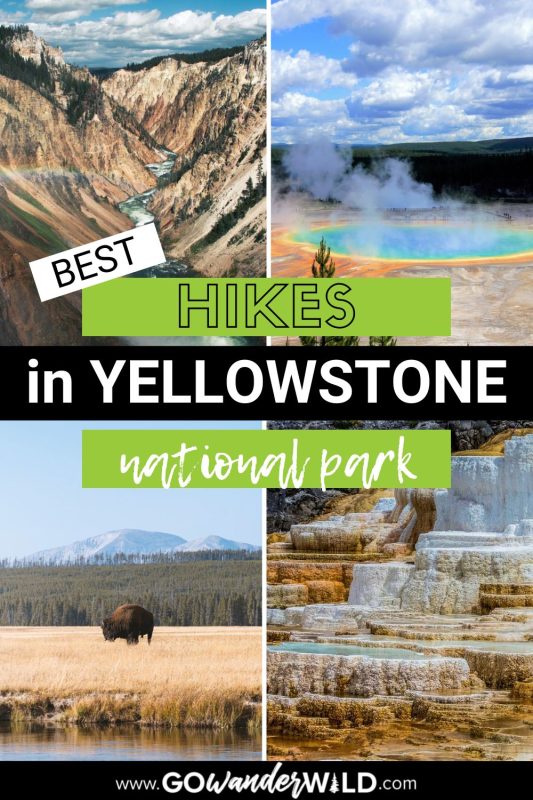
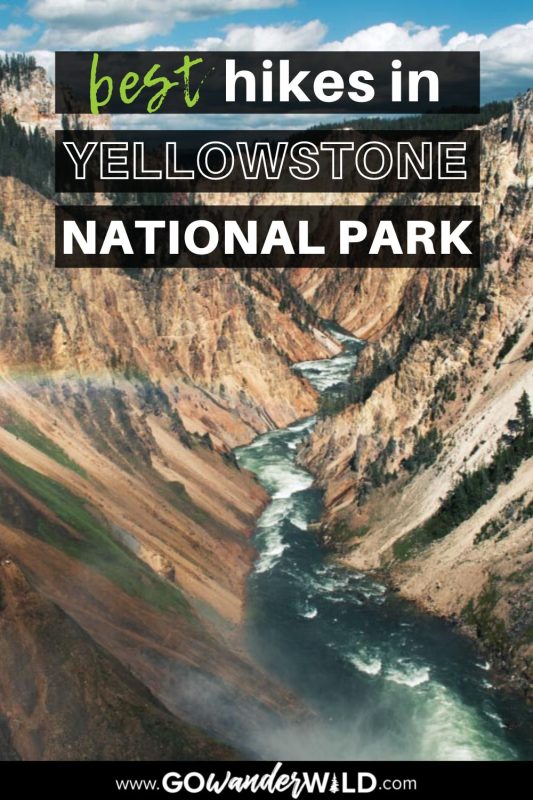
We want to hear from you!
Have you done any of the best hikes in Yellowstone National Park on this list? What was your experience like? Are you planning a trip to Yellowstone National Park and want more advice? Comment below and let us know!

